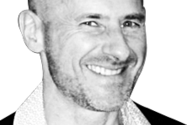Over the last 10 years, next generation sequencing (NGS) technologies have revolutionized genome analysis; we can now sequence the whole genome of an individual within a couple days for less than €5,000. To put that into perspective, it took several years and US $3 million to obtain the first draft of the human genome by Sanger sequencing!
“Massively parallel sequencing” is another term used for NGS, because it produces hundreds of reads of the same sequence and allows the sequencing of numerous fragments from different individuals at the same time. Whereas Sanger sequencing was able to produce 300,000 base pairs (bp) per run at most, NGS can sequence as much as 1,800 Gbp of DNA (1.8x1012 bp) in one run. This is a very important development.
As the technologies evolve, the list of applications for NGS is continuing to grow; rare disease diagnosis being one area that has particularly benefited. In the case of genetically heterogeneous diseases, it is possible to sequence the exons of all known genes simultaneously. This allows completeness and substantially reduces turnaround time when compared with the consecutive analysis of different genes by Sanger sequencing. Medium (0.1-3 Gbp/run) or high (10–100 Gbp/run) throughput equipment is sufficient to analyze panels of 10–100 genes, or whole genes (exons, introns, regulatory sequences), in many (10–100) patients.
In the case of certain pathologies where a very high number of genes (100–500) need analyzing, or where defining a panel is too difficult or even impossible (for example, dysmorphology), sequencing a patient’s exome (all exons of the 23,000 human genes) will provide a diagnosis in about 25 percent of cases. Sequencing the whole genome (3 billion base pairs) may therefore represent an alternative, because it provides a better covering of the exome as well as access not only to the gene coding regions but also to the introns, regulatory sequences, and intergenic regions where mutations with long-distance effects on gene expression can be located.
In addition to detecting point mutations, NGS is also able to detect and finely characterize gross gene or genomic rearrangements, such as deletions, duplications, inversions and translocations. So, we see NGS entering the field of cytogenetics where I believe it will eventually become a valid alternative to classical cytogenetic techniques. Here, copy number variations (CNV) are characterized by a drop (deletion) or an increase in the number of times a region of the genome is read in a given individual when compared with controls. Hence small (several kilobase pairs, typically comprising only one or several exons of a gene) or large (> 10 kilobase pairs or more) CNVs can be detected using NGS. Whole genome sequencing allows precise definition of the breakpoints of CNVs, inversions, translocations, and highly complex rearrangements that cannot be characterized by any other technological approach.
The power of NGS can be further seen in ultra-deep sequencing, where each DNA base can be sequenced many times (>1000). Using this approach, we can detect rare mutational events in a sample. This is very interesting for oncology as it identifies mutations present in a restricted fraction of cancerouscells, and in diseases where mutations are present as a somatic mosaic in subpopulations of cells.
Finally, NGS is a powerful approach for non-invasive prenatal testing (NIPT) of aneuploidies. Considering that fetal DNA represents five to 10 percent of freely circulating DNA in maternal blood, Trisomy 13, 18 or 21 can be diagnosed with almost 100 percent specificity and efficiency with a simple blood sample. This avoids invasive amniocentesis or trophoblastic samplings, which are associated with a one percent risk of miscarriage. This constitutes a significant progress for at-risk pregnancies.
I have discussed just a few ways in which scientists and patients are benefiting from the incredible progress that has been made in molecular genetics. It’s so exciting to be working in this ever-evolving field of healthcare, and there is still so much yet to come…

Benoit Arveiler is professor of medical genetics at the University of Bordeaux and University Hospital of Bordeaux, France.















